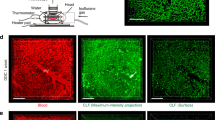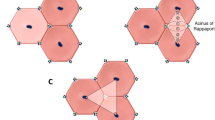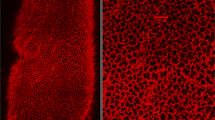Abstract
THE structure of the walls of the bile canaliculi of the liver has long been of interest; the question of importance being whether the canaliculi had definite walls of their own, or whether they were formed from modifications of the walls of the hepatocytes themselves. Early workers1–3 believed that the canaliculi had definite walls of their own; but Zimmermann4 suggested that they were formed by modifications of the walls of the hepatocytes, and described dense structures at the edges of the canaliculi which he called “terminal bars”. Morton5 was able to show that the lining of the bile canaliculi was in the form of a ‘brush border’, and apart from Zimmermann's terminal bars he found a collection of basophilic material in the cell cytoplasm lying close to the bile ducts. Rouiller6, in an electron microscope study of the rat liver bile canaliculi, showed that the cell membranes were closely opposed in the neighbourhood of the canaliculus, but with only osmium as an electron stain, he found no modification or thickenings of the cell wall in the proximity of the duct. In a study of normal and regenerating rat liver using ‘Araldite’ embedding followed by phosphotungstic acid staining, it was found that some parts of the cell walls related to the bile ducts took up this stain particularly well.
This is a preview of subscription content, access via your institution
Access options
Subscribe to this journal
Receive 51 print issues and online access
$199.00 per year
only $3.90 per issue
Buy this article
- Purchase on Springer Link
- Instant access to full article PDF
Prices may be subject to local taxes which are calculated during checkout
Similar content being viewed by others
References
Andrejevic, J., Wiener Sitzungsberichte, 34, 642 (1861).
Gerlach, J., “Beiträ zur Strukturlehre der Leber” (Mainz, 1849).
MacGillavry, T. H., Wiener Sitzungsberichte, 50, 207 (1864).
Zimmermann, K. W., Arch. Mikr. Anat., 52, 608 (1898).
Morton, T., Anat. Rec., 73, 359 (1939).
Rouiller, C., Acta Anat., 26, 94 (1956).
Barnes, B. G., Nature, 184, 651 (1959).
Barnes, B. G., and Davis, J. M. G., J. Ultrastructure Res., 3, 131 (1959).
Davis, J. M. G., Nature, 183, 200 (1959).
Author information
Authors and Affiliations
Rights and permissions
About this article
Cite this article
DAVIS, J. Structure of the Walls of the Bile ‘Canaliculi’ in Mammalian Liver Cells. Nature 188, 1123–1124 (1960). https://doi.org/10.1038/1881123a0
Issue Date:
DOI: https://doi.org/10.1038/1881123a0
This article is cited by
-
La fine structure des canalicules biliaires du fois de rat dans la cholostase extrah�patique
Zeitschrift f�r Zellforschung und Mikroskopische Anatomie (1962)
-
Zur Morphologie der Leberzellmembran
Zeitschrift f�r Zellforschung und Mikroskopische Anatomie (1961)
Comments
By submitting a comment you agree to abide by our Terms and Community Guidelines. If you find something abusive or that does not comply with our terms or guidelines please flag it as inappropriate.



